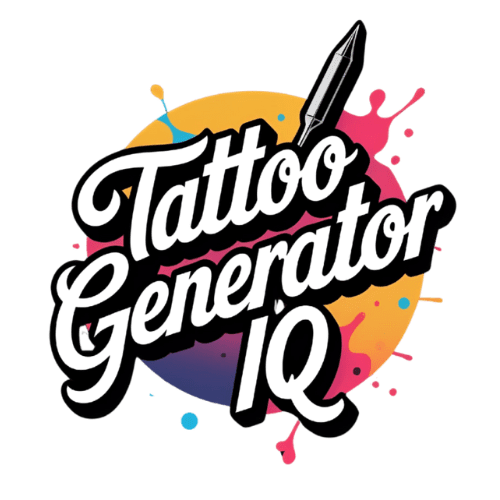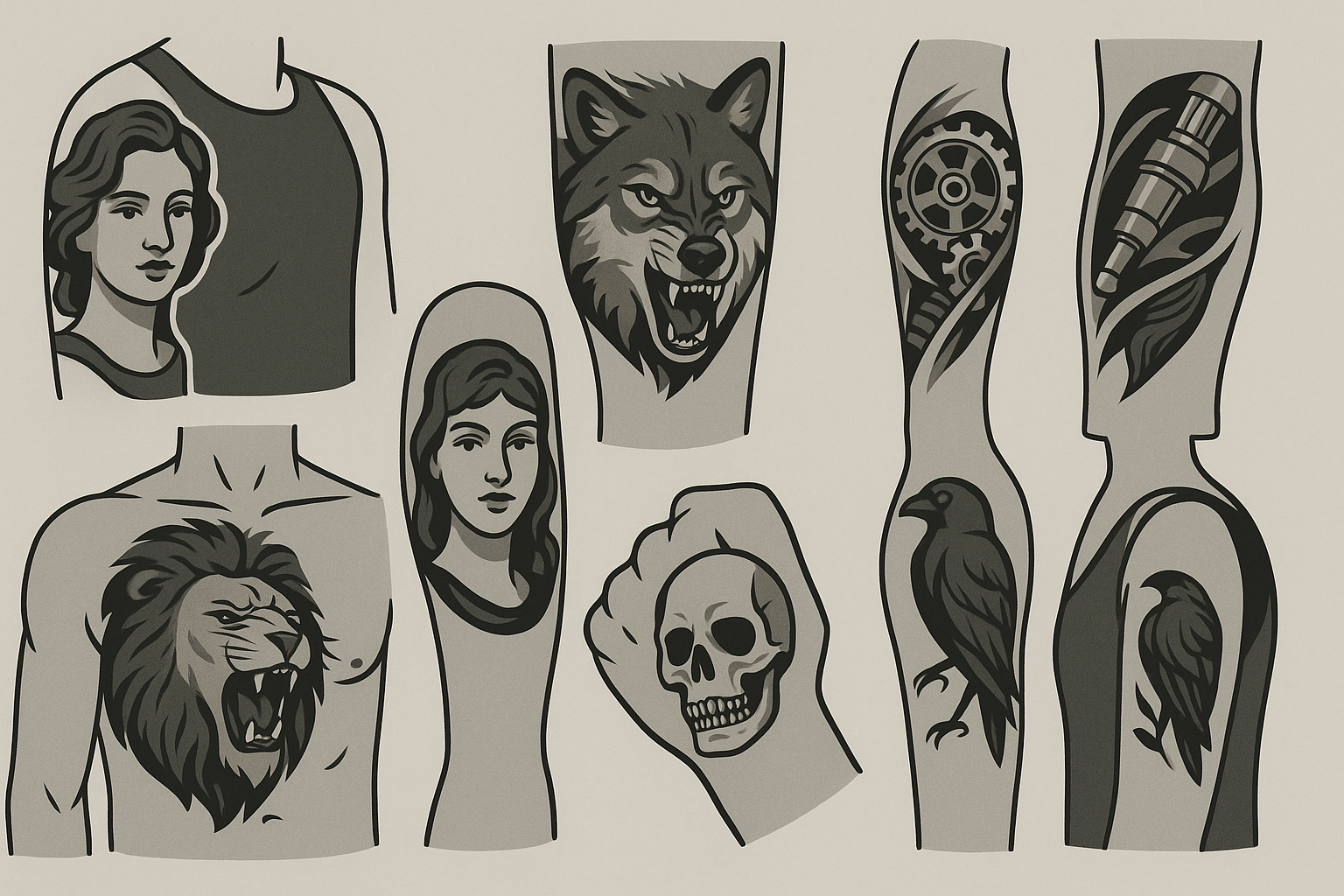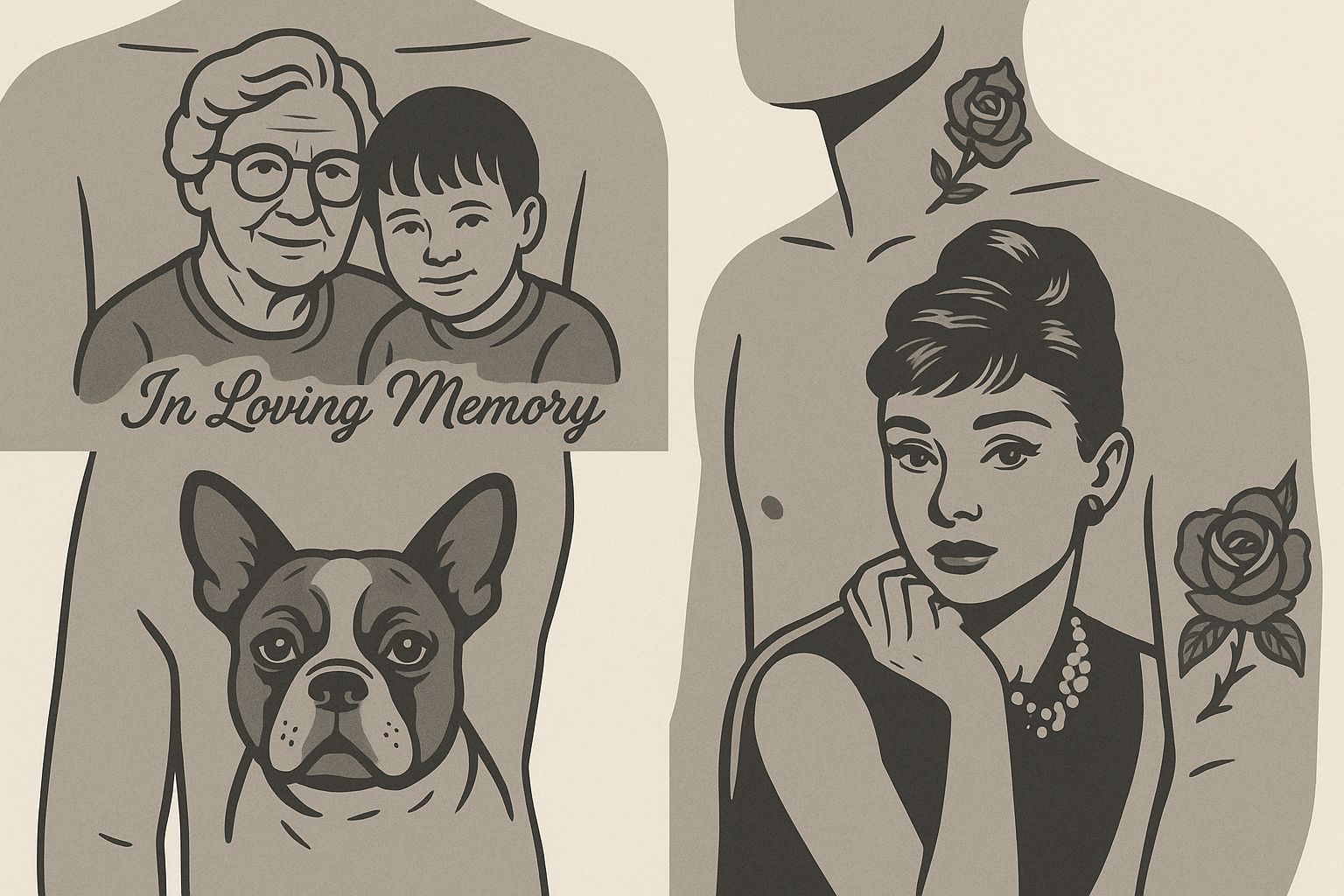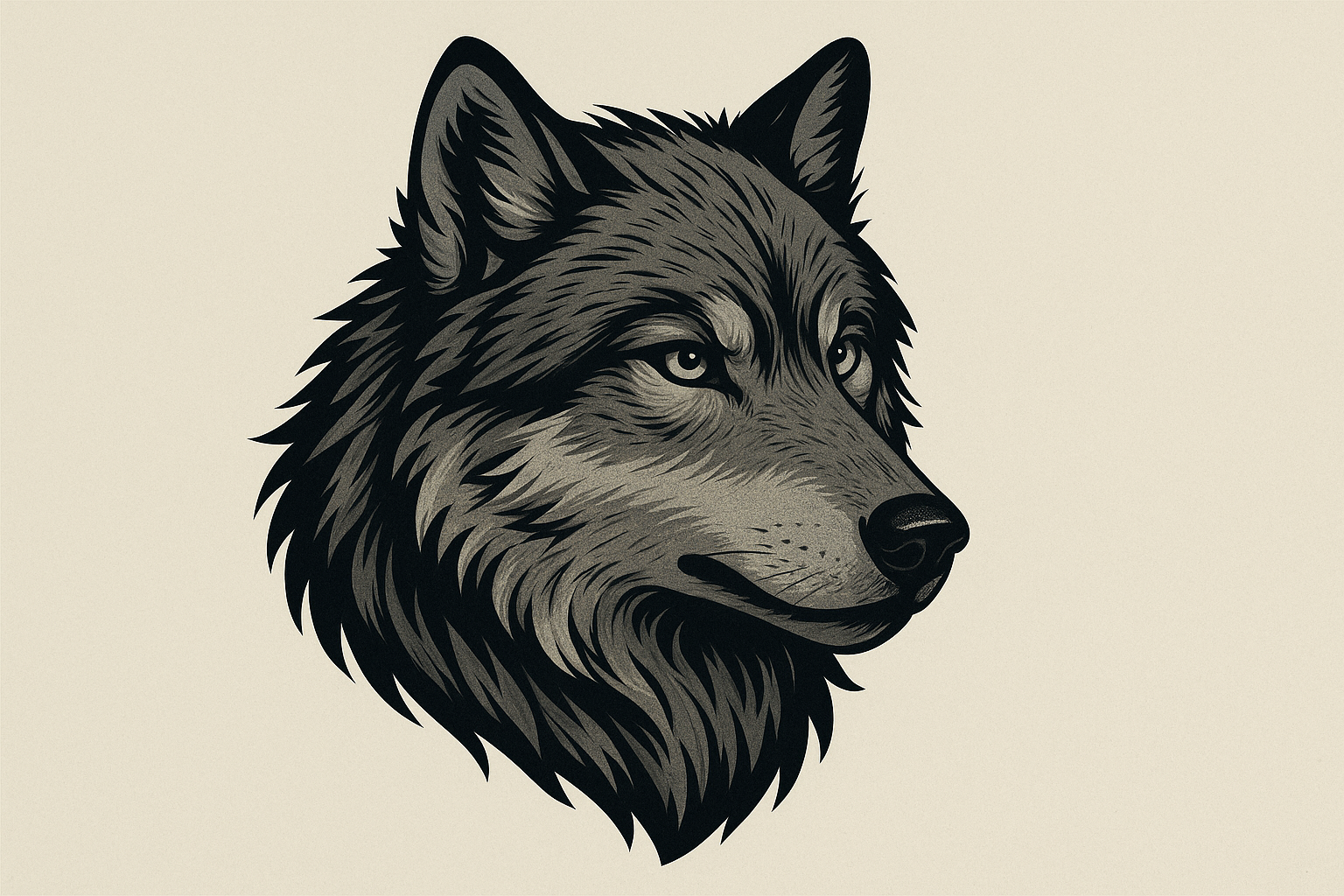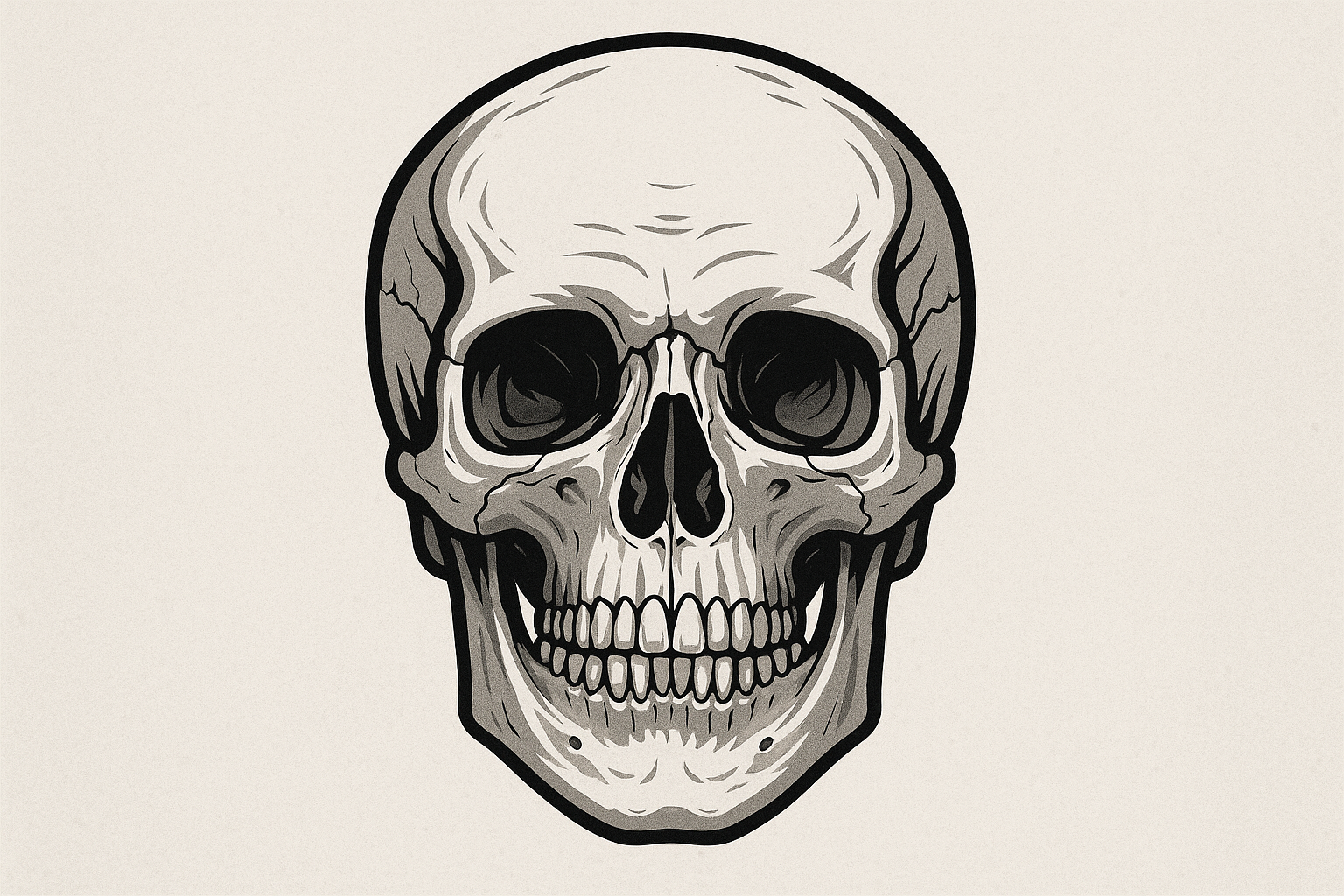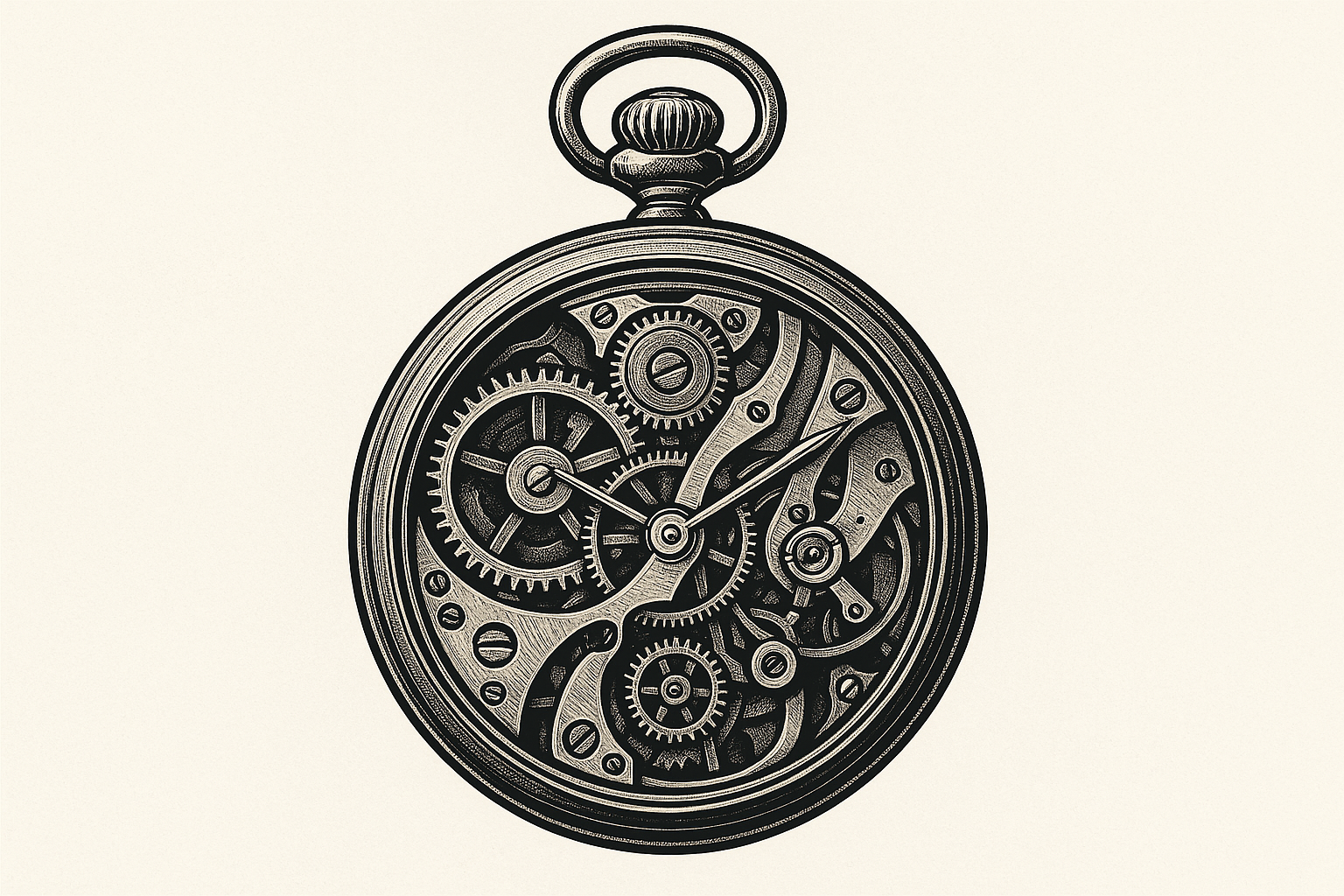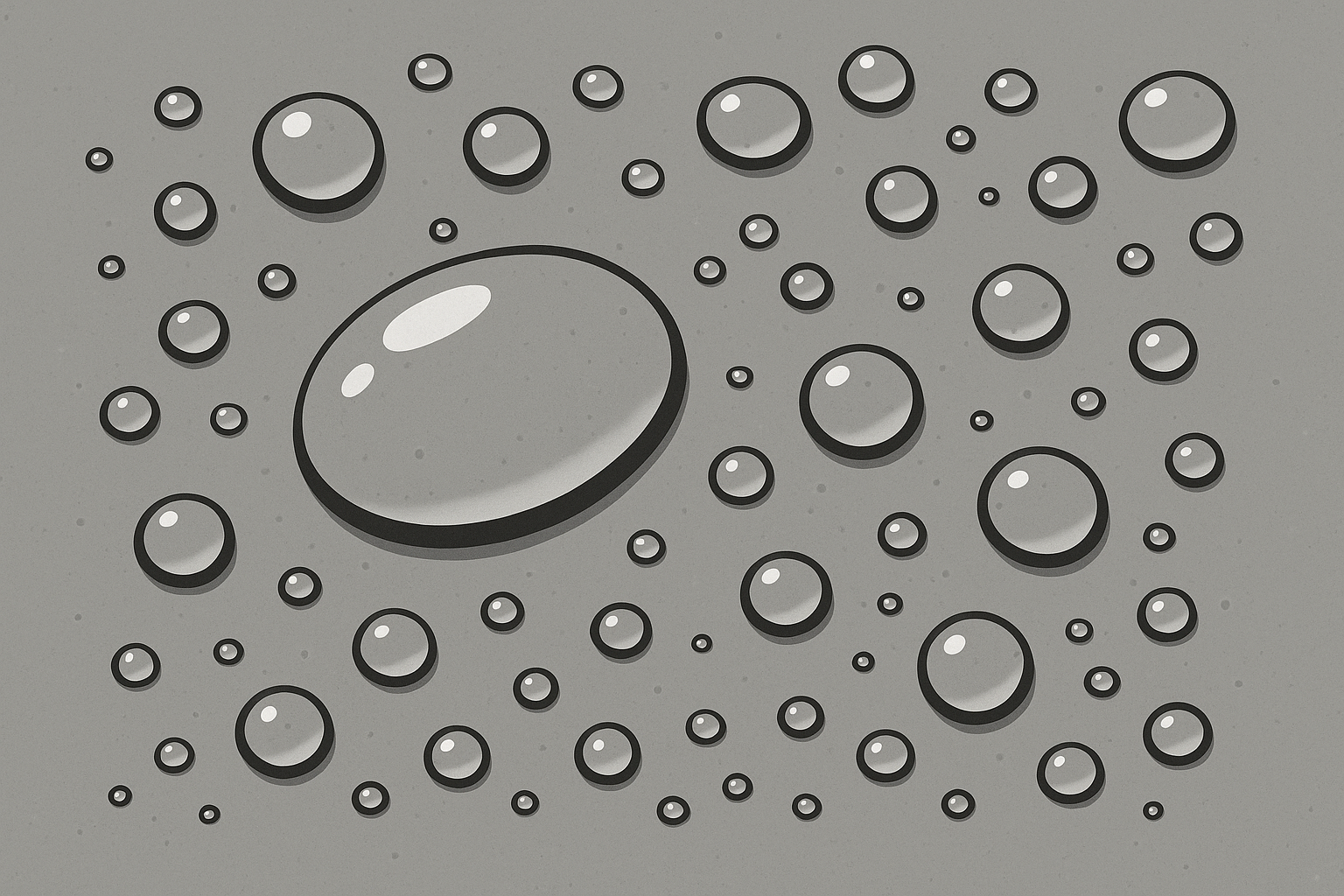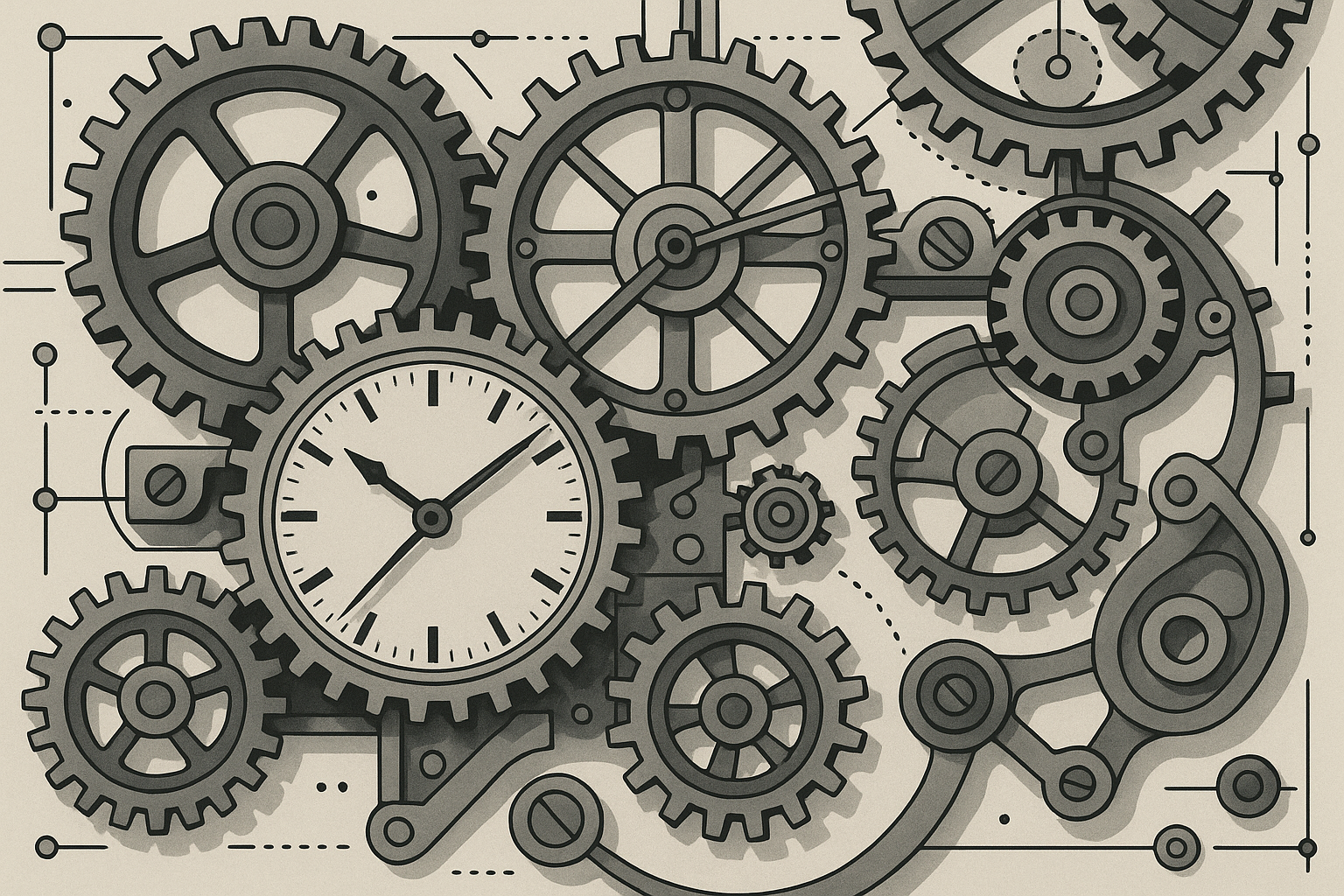25 Stunning Black and Grey Realism Tattoos That Will Transform Your Body Art Vision
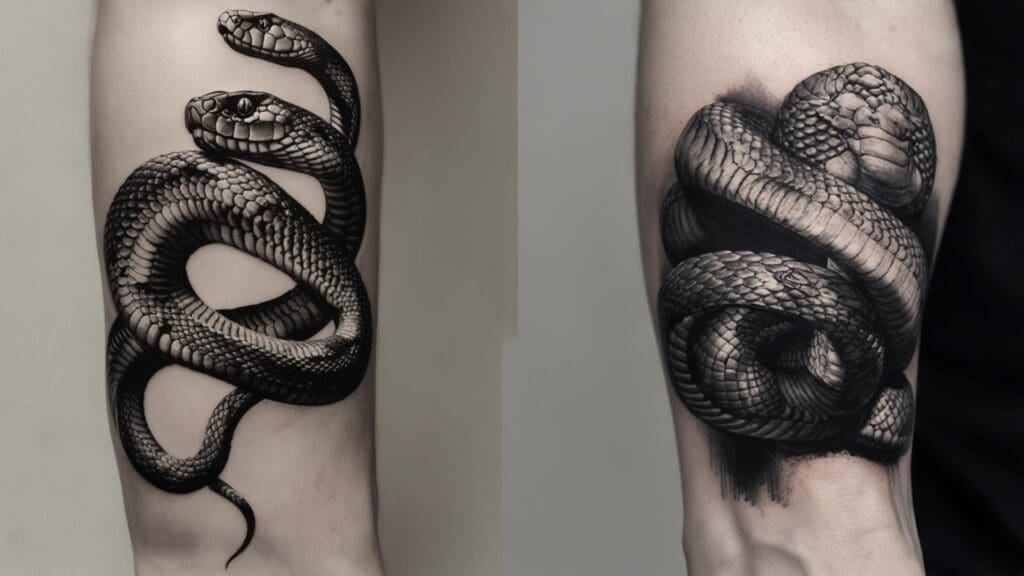
Black and grey realism tattoos are having a major moment right now, and honestly? I totally get why. Realism tattoos continue to be one of the most popular tattoo styles around the world due to their intricate designs and attention to detail. I’ll never forget walking into my first tattoo consultation completely overwhelmed by all the possibilities – until I saw this black and grey realism piece that literally stopped me in my tracks. The depth, the emotion, the insane skill it took to make ink on skin look that lifelike… that’s when I understood why these tattoos command so much respect.
You’re about to see 25 incredible black and grey realism designs that’ll blow your mind. We’re talking everything from portraits that’ll make you do a double-take to mechanical pieces so detailed you’ll swear they’re about to start moving. But here’s the thing – these aren’t just pretty pictures. Each one requires serious technical skill and careful planning if you want it to look amazing for decades, not just Instagram photos.
Table of Contents
- What You Actually Need to Know Before Getting Black and Grey Realism
- 25 Mind-Blowing Black and Grey Realism Tattoos
- Portrait Realism (7 designs)
- Nature and Wildlife (6 designs)
- Anatomical and Medical (4 designs)
- Mechanical and Architecture (4 designs)
- Abstract and Artistic (4 designs)
- The Real Talk on Each Design Category
- Why These Tattoos Actually Work (And Some Don’t)
- How Tattoo Generator IQ Can Save You From Expensive Mistakes
- Final Reality Check
TL;DR
Look, I’m gonna be straight with you:
- These tattoos cost more and hurt more because they take longer – plan accordingly
- Portrait work is the hardest but most emotionally powerful category
- Nature pieces look incredible and age pretty well
- Anatomical tattoos are perfect if you want science meets art
- Mechanical designs are practically bulletproof for longevity
- Abstract pieces give you the most flexibility for placement
- Don’t cheap out on the artist – seriously, just don’t
- Budget for touch-ups every 5-10 years or your investment will look rough
What You Actually Need to Know Before Getting Black and Grey Realism
Before you fall in love with a design and book that appointment, here are five things you absolutely need to think about. And trust me, I’ve seen too many people skip this part and regret it later.
First up: does your design actually work as a tattoo? That Pinterest photo might look amazing, but if it doesn’t have proper contrast or the details are too fine, it’ll turn into a muddy mess on your skin. Second: your artist better know what they’re doing with realism work – this isn’t the time to give someone a chance to “try something new.”
Third: placement matters way more than you think. Cramming a detailed portrait into a tiny space is like trying to fit a movie onto a postage stamp. Fourth: these tattoos need maintenance, period. And fifth: quality costs money, and quality realism costs even more money.
Understanding the financial reality is crucial, especially when you consider how much tattoos cost across different styles and complexity levels. Realism work commands premium pricing for good reason.
| What You Need to Consider | Why It Actually Matters | What Happens If You Ignore It | When to Deal With It |
|---|---|---|---|
| Design Quality | Separates amazing tattoos from muddy disasters | Your tattoo looks like a blob instead of art | Before you even book a consultation |
| Artist Skills | Only specialists should attempt realism | You get a mediocre tattoo that can’t be fixed | During your artist research phase |
| Placement Strategy | Some spots just don’t work for detailed pieces | Distortion, fading, and regret | When planning your design |
| Maintenance Reality | Fine details fade and blur over time | Your investment slowly turns into disappointment | Every 5-10 years for life |
| Budget Planning | Quality work costs serious money | You get what you pay for, and cheap is expensive | Right now, before you start |
Does Your Design Actually Work as a Tattoo?
Here’s what separates amazing realism tattoos from the mediocre ones: they actually look real. Sounds obvious, right? But you’d be surprised how many people don’t understand that what looks good on paper might look terrible on skin.
Think of it like this: if you squint at your tattoo from across the room, you should still be able to tell what it is. That requires proper contrast – the difference between your darkest blacks and lightest greys creates the depth that makes realism work. Without it, you get a grey blob that everyone has to squint at to figure out.
The shading needs to flow naturally – no harsh lines that scream “this is a tattoo!” Your artist should understand how light actually behaves, not just copy a photo dot by dot. I’ve seen too many people bring in photos with terrible lighting and wonder why their tattoo doesn’t look right.
Let’s say you want a memorial portrait of your grandmother. A good design captures those little details that made her face uniquely hers – the way her eyes crinkled when she smiled, that slight asymmetry that made her beautiful. A bad design gives you a generic old lady’s face that could be anyone’s grandmother. The difference is in the artist’s ability to see what actually matters and translate it to skin.
Your Artist Better Know What They’re Doing
Don’t be the person who picks an artist because they’re cheap or available next week. This isn’t a haircut – it’s permanent. Realism requires a completely different skill set than traditional tattooing, and not every good tattoo artist can pull it off.
Stalking your potential artist’s Instagram isn’t weird – it’s research. Look for consistency in their realism work, not just their absolute best piece. Can they make fur look different from fabric? Does skin actually look like skin, or does it look like plastic? These details separate the specialists from the artists who are just trying something new.
If an artist gets defensive when you ask to see healed photos of their realism work, run. Good artists want educated clients who understand what they’re getting into. They should be excited to show you how their work ages, not evasive about it.
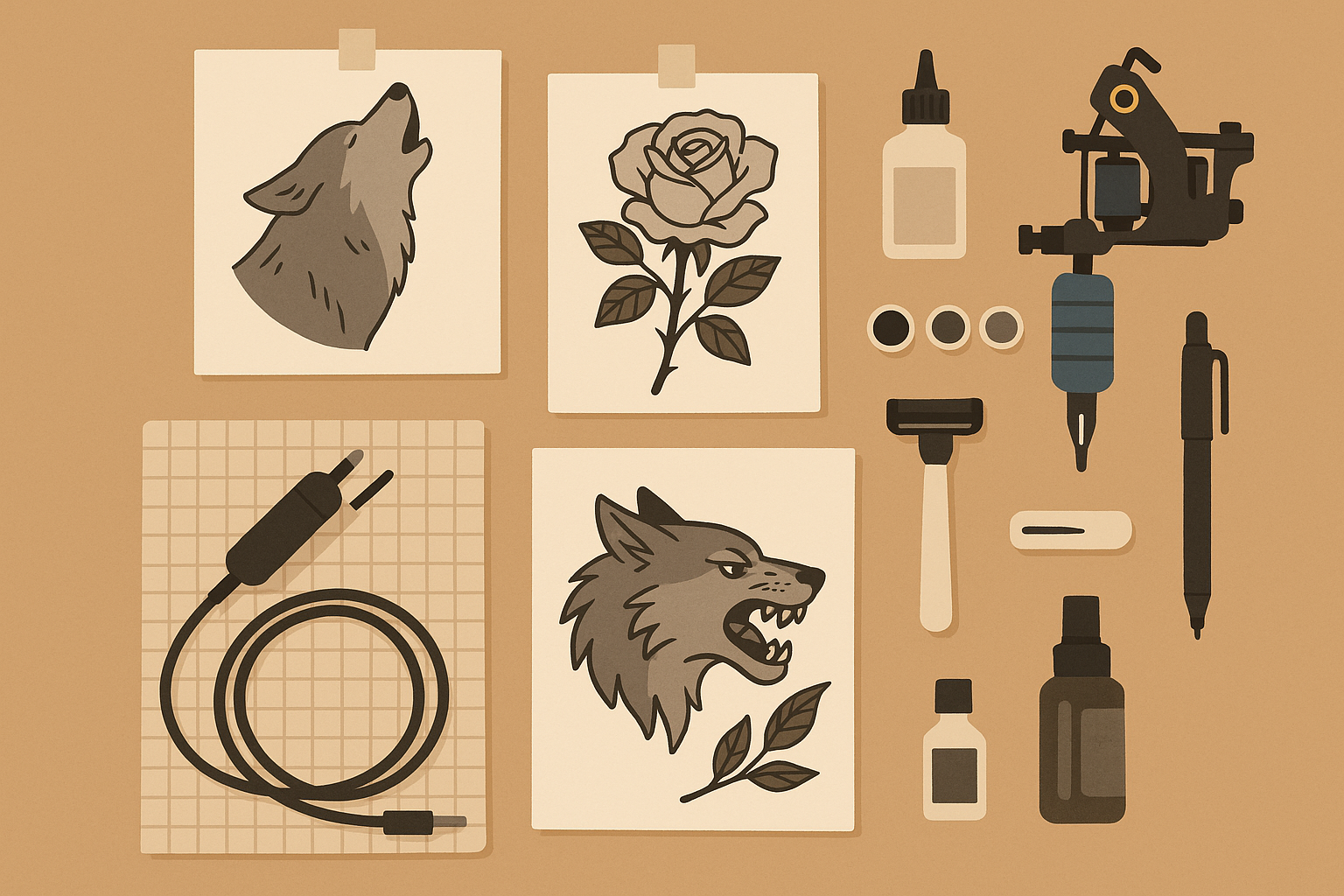
Placement: Size and Location Actually Matter
I don’t care how much you love that spot behind your ear – some designs need room to breathe. Realism tattoos are like movies: they need the right screen size to work properly. Trying to cram a detailed portrait into a 3-inch space is like watching an epic film on your phone – technically possible, but you’re missing the point.
Your body moves, stretches, and changes over time. Your ribs move when you breathe. Your stomach changes when you eat. Your hands are constantly in motion. Connect the dots here. Areas that stretch or move frequently will distort fine details faster than stable areas.
For shoulder placement specifically, understanding shoulder tattoo costs and placement considerations helps with proper planning and realistic budgeting.
Think long-term about your skin. That 25-year-old skin you have now? It’s going to behave very differently at 45. Areas prone to weight fluctuation or sun exposure will age your tattoo faster. Your artist should have this conversation with you, and if they don’t bring it up, you should.
Touch-Ups Aren’t Optional
Here’s the truth nobody wants to talk about: realism tattoos require maintenance. Those fine details, subtle shading, and tiny elements will blur over time – it’s not poor artistry, it’s physics. Skin is a living, changing surface, and ink settles and spreads slightly as you age.
Bold traditional tattoos age gracefully because they’re designed for longevity from day one. Realism tattoos age beautifully when properly maintained. The difference is that maintenance part – you can’t just get it and forget it.
Don’t be shocked when your artist recommends touch-ups every 5-10 years. This isn’t a money grab; it’s part of owning a realism tattoo. Budget for this now, or watch your investment slowly turn into disappointment.
Let’s Talk Money Because Nobody Else Will
A good realism piece starts around $800 and goes up from there. Way up. And that’s just the beginning. The technical complexity requires more time, more skill, and often multiple sessions. Healing time between sessions means this isn’t a quick process.
You know that saying “good, fast, cheap – pick two”? With realism tattoos, you only get one option: good. It won’t be fast, and it definitely won’t be cheap. But trying to save money on a realism tattoo is like buying a discount parachute – the consequences of going cheap are permanent.
Factor in future touch-ups, proper aftercare products, and time off work for longer sessions. This is an investment, not an impulse purchase.
25 Mind-Blowing Black and Grey Realism Tattoos
Alright, here’s where things get exciting. I’ve organized these into five categories that showcase different skills and challenges. Portrait realism leads the pack with seven designs that’ll mess with your head – they’re that realistic. Nature and wildlife brings six pieces that capture everything from fierce wolves to serene mountain scenes.
Anatomical and medical offers four designs that blend science with art beautifully. Mechanical and architecture shows off four pieces that celebrate human craftsmanship and engineering. Abstract and artistic rounds out the collection with four designs that prove sometimes the most challenging subjects make the most stunning tattoos.
Portrait Realism: When Ink Becomes Life
1. Family Member Memorial Portrait
Memorial tattoos hit different. They carry emotional weight that goes beyond just looking cool, and they demand technical perfection because you’re not just getting art – you’re creating a permanent tribute to someone who mattered.
These pieces need high-resolution photos that actually show your loved one’s personality, not just their face. That formal portrait from 1987 might be all you have, but if you can find a photo where they’re genuinely smiling or showing that expression that was uniquely theirs, that’s gold. Your artist needs to see their actual character, not just their features.
The technical challenge here is insane – capturing not just how someone looked, but who they were. The best memorial portraits feel like the person might start talking any second. That requires mastery of skin texture, hair detail, and understanding how light plays across different facial features.
2. Pet Portrait Realism
Your furry family members deserve the same artistic treatment, and honestly, sometimes pet portraits are even more challenging than human ones. Dogs have expressions, sure, but they’re different from human expressions. Cats have this mysterious quality that’s hard to capture without making them look creepy.
The real challenge is fur texture. Each breed behaves differently – German Shepherd fur doesn’t act like Golden Retriever fur, and your artist better understand these distinctions. Those individual hairs need to flow in the right direction and catch light naturally, or the whole thing falls apart.
Dog portraits work best when they capture personality through ear position, tongue placement, and that unmistakable “dog smile” that made you fall in love with them. Cat portraits are all about those piercing eyes and facial structure that screams feline attitude.
3. Celebrity Portrait
Celebrity portraits are interesting because everyone knows what the person looks like, so there’s nowhere to hide if the artist messes up the proportions. These pieces test an artist’s ability to capture instantly recognizable features while adding their own artistic interpretation.
The challenge goes beyond just getting a likeness – it’s about capturing what makes someone famous. What makes Elvis unmistakably Elvis? How do you render Marilyn Monroe’s beauty in shades of grey? These questions drive the whole artistic process, and the answers separate good artists from great ones.
Often these incorporate signature elements – a musician’s instrument, an actor’s iconic costume, or styling that defines their public persona. Done right, they’re conversation starters. Done wrong, they’re “who’s that supposed to be?”
4. Self-Portrait
Self-portraits are fascinating because you’re making a statement about how you see yourself or want to be seen. There’s something bold about putting your own face on your body permanently, and it often incorporates symbolic elements that reflect personality beyond just physical appearance.
These pieces offer creative freedom while presenting interesting psychological challenges. You’re not just commissioning art – you’re making a statement about identity and self-perception. The result becomes deeply personal artwork that reflects both how you look and who you are inside.
5. Child Portrait
Capturing childhood innocence requires a delicate touch because children’s faces lack the defined structure of adult features. Too much detail ages a child’s face artificially, while too little loses the individual characteristics that make them recognizable.
The key is suggesting rather than over-defining features. Children’s skin is softer, their expressions more fleeting, and their proportions different from adults. Artists need to understand these differences and work with them, not against them.
These often work best when they capture a specific moment or expression rather than trying to create a formal portrait. That gap-toothed grin, those curious eyes, the way they looked at you when they were discovering the world – that’s the magic worth preserving.
6. Elderly Portrait with Character Lines
Age brings character, and character lines tell stories. These portraits celebrate life experience through detailed rendering of wrinkles, laugh lines, and the wisdom visible in weathered features. But here’s the thing – they need to make age beautiful, not just accurate.
Each line represents decades of smiles, concerns, and expressions. Your artist needs to capture this history respectfully and artistically, showing the beauty in aging rather than just documenting it. The challenge lies in rendering texture that suggests life lived fully without becoming clinical or harsh.
7. Couple Portrait
Romantic portraits require serious compositional skill to ensure both people get equal attention and realistic detail. The challenge is creating unified artwork while maintaining individual character for each person – nobody wants to look like an afterthought in their own tattoo.
These work best when the couple shares a meaningful moment – a glance, a touch, an expression of connection that translates into permanent art. The composition needs to flow naturally, showing the relationship between the people, not just two separate portraits crammed together.
Nature and Wildlife: Capturing the Wild
8. Majestic Wolf Portrait
Wolf portraits hit that perfect intersection of wild beauty and spiritual symbolism. These designs focus on intense eye detail, fur texture patterns, and capturing that untamed spirit that makes wolves such compelling subjects.
The technical challenge is all about the fur – each hair group needs proper direction, density, and light interaction. The snout requires careful attention to proportions because too narrow looks weak, too broad looks cartoonish. The overall composition must convey wild spirit without appearing aggressive or threatening.
These work best on areas with adequate space for detail – shoulders, back panels, or thigh areas provide the canvas needed for convincing texture work. Try to cram this into a small space and you’ll lose all the impact.
9. Eagle in Flight
Dynamic bird tattoos require understanding of wing anatomy and feather patterns, plus the ability to suggest motion in a static image. The challenge is making it look like the bird is actually flying, not just posing with wings spread.
Successful eagle tattoos show individual feather shapes, proper wing anatomy, and convincing motion effects. Primary flight feathers behave differently from secondary feathers, and artists need to understand these distinctions. The overall composition must suggest power and freedom while remaining technically accurate.
10. Lion’s Mane Detail
Lion portraits are all about that incredible mane texture and regal bearing. The mane becomes the primary artistic focus, requiring understanding of how hair grows, flows, and catches light in natural conditions.
These pieces often work as close-up studies, allowing maximum detail in mane rendering while capturing the intensity and nobility associated with the “king of beasts.” The challenge lies in making each section of the mane look natural while maintaining the overall flow and structure.
11. Forest Landscape Scene
Comprehensive nature scenes incorporate trees, lighting effects, and atmospheric perspective to create convincing depth. These pieces require understanding of how distance affects detail and contrast – things get lighter and less detailed as they get farther away.
The real challenge is suggesting vast spaces within the constraints of skin. Foreground elements need sharp detail while background elements fade appropriately, creating depth that tricks the eye into seeing more space than actually exists.
12. Ocean Wave Realism
Water is one of the trickiest things to tattoo because it’s transparent, reflective, and constantly moving. Successful wave tattoos capture the power and movement of water through detailed wave formations and spray effects that look like they’re frozen mid-crash.
The key is understanding how light bounces off water surfaces, creating highlights and shadows that suggest liquid motion. Get this wrong and you end up with something that looks more like fabric than water. Get it right and people will swear they can hear the ocean.
13. Mountain Range Vista
Expansive landscape pieces show mountain ranges with proper atmospheric perspective and natural lighting effects. Mountains in the distance appear lighter and less detailed than foreground peaks – this atmospheric perspective creates depth and scale that makes landscape tattoos actually convincing.
These designs require understanding of how atmosphere affects distant objects and how to translate that effect into tattoo form. The challenge is creating that sense of vast distance and scale on a relatively small canvas.
Anatomical and Medical: Science Meets Art
I know a cardiac surgeon who got an anatomically correct heart tattoo on his forearm. He worked with an artist who actually studied medical textbooks to get the details right – proper chamber proportions, coronary arteries, even the interventricular septum. The result impressed his fellow doctors while serving as both personal art and a statement about his dedication to cardiac care.
14. Anatomical Heart
Medically accurate heart representations show chambers, vessels, and anatomical detail while still looking like art, not a textbook illustration. These pieces need at least 4-6 inches to display proper chamber detail and vascular connections without looking cramped.
The technical challenge involves rendering muscular heart texture while maintaining medical accuracy that healthcare professionals would actually recognize as correct. Artists need to understand cardiac anatomy including coronary arteries, chamber proportions, and how blood vessels connect throughout the organ.
15. Skull Study
Detailed human skull renderings focus on bone structure, shadows, and anatomical accuracy. These work in both memorial and artistic contexts, celebrating the beauty of human anatomy without being morbid or scary.
Key technical elements include accurate eye socket depth, nasal cavity structure, and dental detail when visible. The temporal bone area requires careful attention to surface texture and how light interacts with bone surfaces to create convincing three-dimensional form.
16. Hand Study
Realistic hand representations show bone structure, skin texture, and detailed finger anatomy. These pieces often work as part of larger compositions or stand alone as studies of human form and capability.
Hands are incredibly complex – you’ve got bone structure visible beneath skin, proper finger proportions, and skin texture variations across knuckles, palm, and fingertips. Artists must render tendons, veins, and natural asymmetries convincingly without making it look clinical.
17. Eye Close-Up
Hyper-detailed eye studies capture iris patterns, reflections, tear ducts, and individual eyelash detail. These pieces represent vision, perception, or watchfulness while showcasing pure technical skill.
The challenge involves mastering multiple textures – glossy cornea surfaces, detailed iris patterns, individual eyelashes, and skin texture around the eye area. Reflections must appear natural and contextually appropriate, not just random highlights.
Mechanical and Architecture: Celebrating Human Craftsmanship
18. Vintage Timepiece
Detailed pocket watches or clocks showcase gears, mechanisms, and intricate metalwork while symbolizing time’s passage or precision in life. These pieces require understanding of how mechanical components actually work together.
The technical challenge involves rendering different metal textures – brushed steel, polished brass, aged patina. Gear teeth must show proper mechanical accuracy, and the overall composition needs to suggest the precision of clockwork mechanisms. Roman numerals, intricate engravings, and component relationships create visually compelling artwork.
19. Classic Car Engine
Automotive enthusiasts love detailed engine components showing pistons, valves, and mechanical precision. These pieces celebrate the intersection of art and engineering through chrome surfaces, cast iron textures, and component relationships that actually make mechanical sense.
Successful engine tattoos show proper perspective on cylindrical elements, accurate bolt patterns, and convincing metal surface treatments from polished chrome to cast iron roughness. The challenge is making mechanical complexity visually appealing while maintaining technical accuracy.
20. Gothic Cathedral Architecture
Detailed architectural elements include flying buttresses, rose windows, and stone texturing that showcase structural beauty and human craftsmanship. These designs require understanding of architectural perspective and how light interacts with carved stone surfaces.
Flying buttresses need proper structural logic – they can’t just be decorative elements. Rose windows require intricate geometric precision. The overall composition must balance architectural accuracy with artistic impact, creating pieces that celebrate both human craftsmanship and spiritual aspiration.
21. Vintage Camera
Classic camera designs show lens details, mechanical components, and the intersection of art and technology. These pieces appeal to photography enthusiasts and anyone who appreciates precision engineering and craftsmanship.
The challenge involves rendering glass surfaces convincingly while showing internal lens elements and maintaining proper proportional relationships between camera components. Chrome details, leather textures, and mechanical precision create compelling technical studies.
Abstract and Artistic: Pure Technical Mastery
22. Smoke and Flame Effects
Dynamic compositions show realistic smoke patterns and flame movement that demonstrate mastery of texture and atmospheric effects. These pieces require understanding of fluid dynamics and how smoke actually behaves in air currents.
Successful pieces show proper density variations, edge definition that suggests movement, and lighting effects that create dimensional depth in something that’s basically invisible. The challenge lies in making something intangible appear solid and convincing on skin.
23. Fabric and Drapery Studies
Realistic cloth rendering shows folds, shadows, and texture that demonstrates understanding of light, weight, and material properties. Different materials behave uniquely – silk flows differently than canvas, velvet interacts with light differently than linen.
Artists must show proper fold logic, weight distribution, and surface texture that convinces the eye of material reality. These technical studies showcase pure artistic skill through everyday subjects rendered extraordinarily well.
24. Water Droplet Close-ups
Hyper-realistic water studies show surface tension, reflection, and transparency effects that showcase technical precision. These pieces focus on refraction effects and how water interacts with different surfaces.
The challenge involves rendering transparency convincingly while showing internal light refraction and surface reflections that appear naturally occurring. Each droplet becomes a study in physics made visible through artistic skill.
25. Geometric Shadow Play
Realistic shadow effects from geometric objects create depth and dimension through careful attention to light source and shadow casting. These pieces demonstrate mastery of light source consistency and proper shadow casting from three-dimensional forms.
The geometric elements must show proper perspective while shadows create convincing depth and dimensional relationships. These studies prove that even simple subjects can showcase extraordinary technical skill when executed properly.
The Real Talk on Each Design Category
Each category brings its own challenges and rewards, and honestly, some are way harder than others. Portrait realism demands the highest skill level but offers maximum emotional impact. Nature and wildlife pieces balance artistic expression with technical accuracy and age pretty well. Anatomical designs combine medical precision with aesthetic appeal. Mechanical and architectural subjects are practically bulletproof for longevity. Abstract pieces offer the most placement flexibility while showing off pure technical mastery.
When you’re thinking about pain levels for these detailed pieces, understanding the pain level tattoo chart and the science behind why some spots hurt more helps you prepare mentally and physically for those longer sessions.
| Design Category | How Hard Is It Really? | Will It Age Well? | Placement Options | Touch-Up Reality |
|---|---|---|---|---|
| Portrait Realism | Extremely difficult | Needs regular maintenance | Very limited | Every 5-7 years |
| Nature & Wildlife | Pretty challenging | Ages quite well | Decent options | Every 7-10 years |
| Anatomical & Medical | Challenging but doable | Ages well | Good flexibility | Every 7-10 years |
| Mechanical & Architecture | Moderately challenging | Ages like a champ | Very flexible | Every 10-15 years |
| Abstract & Artistic | Varies widely | Usually pretty good | Maximum flexibility | Every 7-12 years |
Portrait Realism: The Ultimate Challenge
Let’s be honest – portrait tattoos are the hardest category, period. Success gets measured by one simple question: does it actually look like the person? There’s nowhere to hide if the proportions are off or the shading doesn’t work.
You need an artist with extensive portrait experience – not someone who’s “pretty good with faces.” Their portfolio should show consistent facial proportions, realistic skin rendering, and the ability to capture personality, not just physical features. Look for artists who understand how faces change with different expressions and lighting.
Placement options are seriously limited. Portraits need flat, stable areas with minimal stretching over time. Upper arms, back panels, and thigh areas work best. Areas that move a lot or change with weight fluctuation should be avoided completely.
Maintenance is non-negotiable – those fine details like individual hairs and subtle shading will soften over time. Budget for touch-ups every 5-7 years if you want it to stay sharp.
Nature and Wildlife: Beautiful and Forgiving
Wildlife pieces offer a sweet spot between technical challenge and long-term satisfaction. They require understanding of animal anatomy and texture work, but they’re more forgiving than portraits if proportions aren’t absolutely perfect.
The key is capturing both anatomical accuracy and the animal’s essential spirit. A wolf should feel wild, an eagle should suggest power and freedom. This requires artists who understand animal behavior and movement, not just how to copy a photo.
Placement considerations favor larger pieces on broad areas like the back, chest, or thigh. Smaller wildlife portraits can work on arms or calves if sized properly to maintain detail readability.
A wildlife photographer I know got a realistic eagle spanning his entire back. The artist studied multiple reference photos to understand wing positioning during different flight phases. Five years later, the bold contrast elements remain crisp while fine feather details show minimal softening – exactly as predicted during planning.
Anatomical and Medical: Science Meets Beauty
These designs balance medical accuracy with artistic presentation, creating pieces that educate while inspiring. They must satisfy both scientific scrutiny and aesthetic appeal without compromising either aspect.
You need artists with medical illustration background or extensive anatomical study. Their work should demonstrate understanding of three-dimensional organic forms and how different body systems actually work.
Placement often works best when relating to the depicted body part – heart tattoos on the chest, hand studies on arms, skull work wherever there’s adequate space. The symbolic relationship between placement and subject enhances overall impact.
Longevity is excellent for bold anatomical structures with clear contrast relationships. Bone structures maintain their appearance exceptionally well, while fine details like small blood vessels may need periodic touch-ups every 7-10 years.
Mechanical and Architecture: Built to Last
Design quality depends on technical accuracy, proper perspective work, and convincing material rendering. Timepieces must show mechanically sound relationships, while architectural pieces need structurally logical elements and proper scale.
You need artists with technical drawing skills and mechanical understanding. Portfolio review should focus on consistent perspective work and material differentiation across different subjects.
Placement shows great flexibility – mechanical pieces adapt well to cylindrical body areas like arms and legs where three-dimensional forms complement natural contours. Architectural pieces work as vertical compositions on limbs or horizontal pieces across back or chest.
Longevity expectations are excellent – hard-edged mechanical and architectural elements age exceptionally well, maintaining structure and clarity over decades. Fine details might soften but typically retain readability much longer than organic subjects.
Abstract and Artistic: Creative Freedom
Design quality succeeds when demonstrating technical mastery while maintaining artistic impact. Smoke effects must show convincing atmospheric behavior, while fabric studies need proper material logic that convinces the eye.
Artists need advanced understanding of light, atmosphere, and material properties. They must demonstrate ability to render challenging subjects like smoke or complex interactions like fabric folds with convincing realism.
Placement offers maximum flexibility since abstract pieces don’t require specific anatomical relationships. Flowing subjects like smoke work well on areas with natural movement, while geometric pieces adapt to various body contours without losing impact.
Longevity varies by subject – abstract pieces with strong contrast age well, while atmospheric effects may need periodic touch-ups to maintain their quality. Geometric elements typically maintain structure excellently over time.
| What You’ll Actually Spend | Initial Investment | Maintenance Reality | 10-Year Total Cost |
|---|---|---|---|
| Portrait Realism | $800-$2,500 | $300-$600 every 5-7 years | $1,400-$3,700 |
| Nature & Wildlife | $600-$2,000 | $200-$500 every 7-10 years | $1,000-$2,500 |
| Anatomical & Medical | $700-$2,200 | $250-$500 every 7-10 years | $1,200-$2,700 |
| Mechanical & Architecture | $500-$1,800 | $200-$400 every 10-15 years | $700-$2,200 |
| Abstract & Artistic | $600-$1,900 | $250-$450 every 7-12 years | $1,100-$2,350 |
Why These Tattoos Actually Work (And Some Don’t)
The complexity we’ve been talking about shows exactly why planning black and grey realism tattoos requires more than just picking a cool design. Traditional planning methods often fall short because they don’t account for how these pieces need to translate to skin and age over time.
For those exploring options beyond realism, our guide to the best AI tattoo generators shows how technology transforms creative concepts into practical tattoo designs.
Here’s what separates the amazing pieces from the disappointments: understanding skin as a medium, not just a canvas. Ink behaves differently on different body areas, skin changes over time, and what looks perfect fresh might look terrible healed if the artist doesn’t understand these realities.
The successful pieces we’ve looked at share common elements – proper contrast ratios that create depth, shading techniques that age gracefully, and detail levels that remain readable over decades. They’re designed with longevity in mind, not just immediate visual impact.
The failures usually come from rushing the process, choosing inexperienced artists, or ignoring placement advice. I’ve seen too many people fall in love with designs that simply won’t work at the size or location they want, then proceed anyway because they don’t want to hear the truth.
How Tattoo Generator IQ Can Save You From Expensive Mistakes
Traditional design methods fall short when dealing with realism’s technical demands. Generic image generators create pretty pictures, but they don’t understand tattoo-specific constraints like proper contrast ratios for skin, shading techniques that age well, or detail levels that stay readable over time.
Tattoo Generator IQ changes this completely through AI technology specifically trained on professional tattoo portfolios. Unlike general image generators, our platform understands the unique requirements of tattoo application and how different designs translate to skin.
Our realism training ensures technical accuracy across all categories. Anatomical subjects maintain medical precision while preserving artistic appeal. Mechanical designs show structurally sound relationships. Portrait work captures those subtle details that make faces recognizable and emotionally compelling.
The platform’s placement intelligence considers how different subjects work on various body areas, helping you choose locations that complement your design’s technical requirements and your body’s natural contours. This prevents costly mistakes that compromise long-term success.
Ready to explore your perfect black and grey realism design? Visit Tattoo Generator IQ today and discover how professional-grade AI can transform your vision into reality.
Final Reality Check
Pain is definitely a consideration for realism work, and women especially should check out the ultimate tattoo pain scale for women to understand how those longer sessions might affect their experience.
Look, realism tattoos aren’t for everyone. They’re expensive, time-consuming, and require ongoing maintenance. But when they’re done right? They’re absolutely incredible. These 25 designs show the incredible range possible within this style, from emotionally powerful portraits to technically precise mechanical studies.
Your success depends on being honest about your commitment level, having realistic expectations about maintenance, and being super careful about both design and artist selection. Portrait work offers maximum emotional impact but needs the most care. Nature pieces provide beautiful balance between art and longevity. Anatomical designs celebrate where science meets art. Mechanical subjects age like champions while showcasing technical precision. Abstract studies offer pure artistic expression with maximum placement flexibility.
Remember that these tattoos require ongoing relationships with skilled artists, periodic maintenance, and realistic budgeting for long-term care. The initial investment is just the beginning of your journey with a piece of art that will evolve with you over decades.
Don’t rush this decision. A great realism tattoo is worth waiting for. A bad one is forever (or expensive to fix). Choose wisely, plan thoroughly, and prepare for a lifetime of appreciation for truly exceptional body art that pushes the boundaries of what’s possible with ink and skin.
